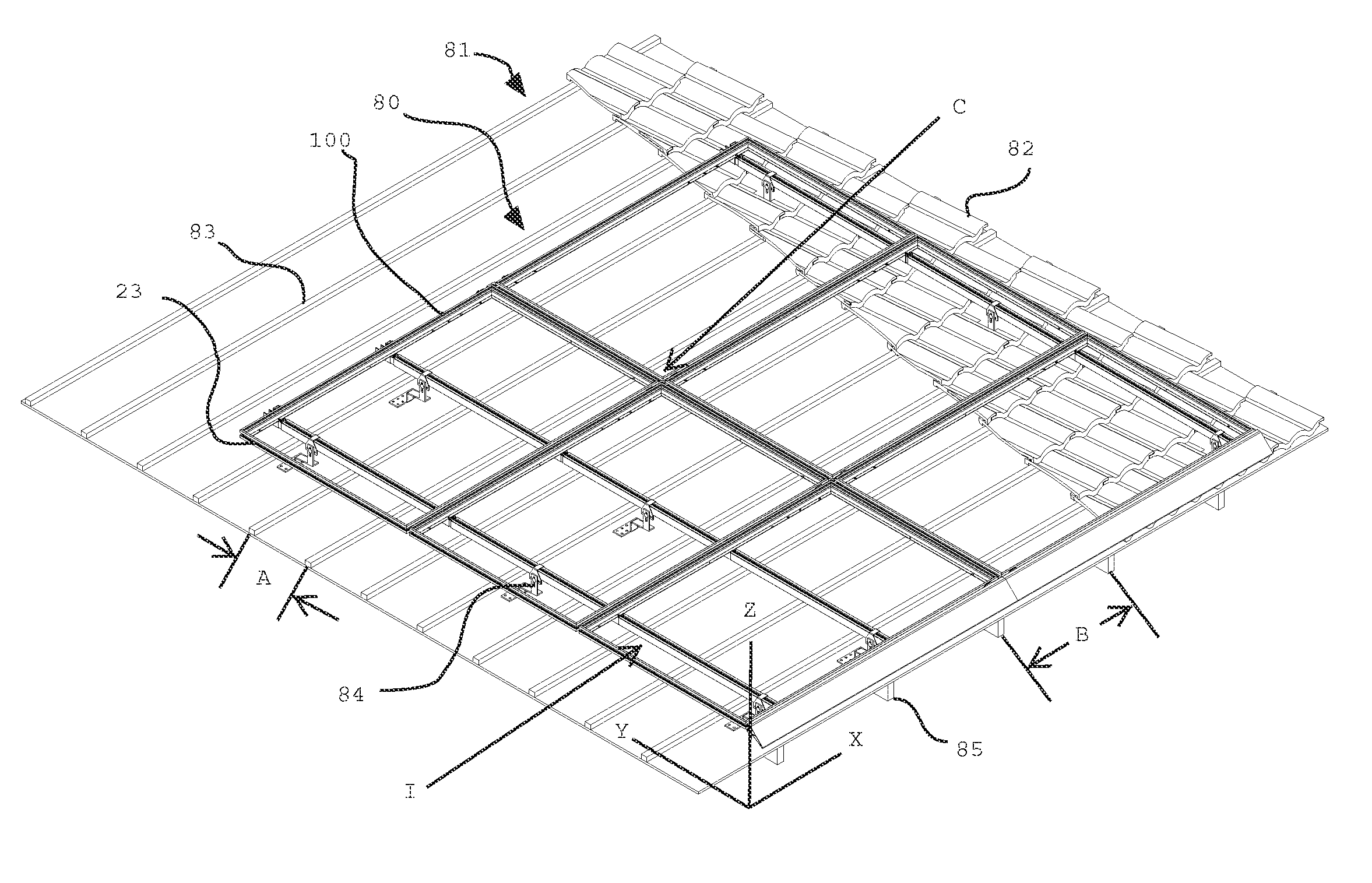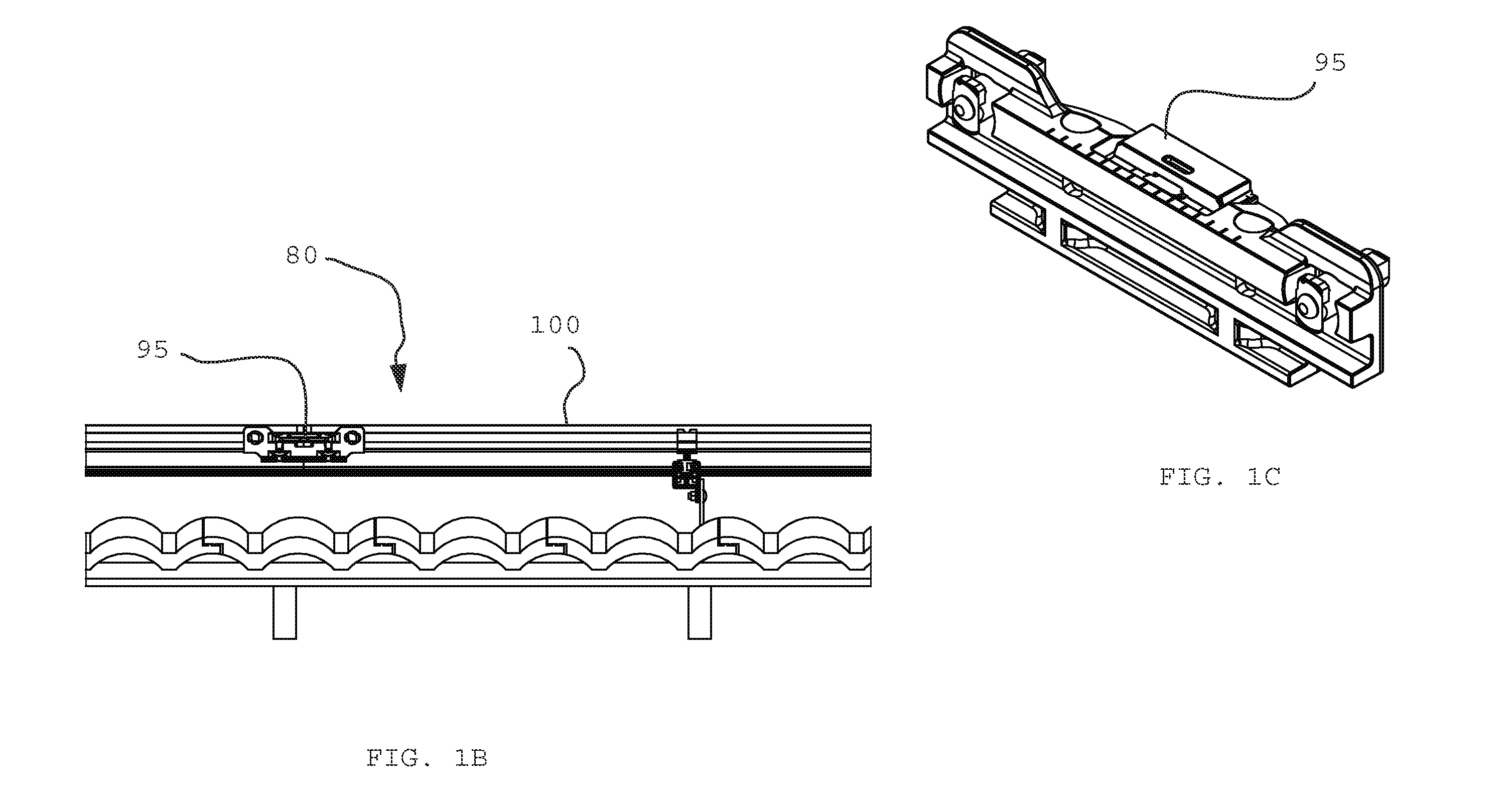Discrete Attachment Point Apparatus and System for Photovoltaic Arrays
a technology of photovoltaic arrays and attachment points, which is applied in the direction of heat collector mounting/support, lighting and heating apparatus, rod connections, etc., can solve the problems of -20 feet long, difficult to warehouse, ship, move onto a roof or other support surface,
- Summary
- Abstract
- Description
- Claims
- Application Information
AI Technical Summary
Benefits of technology
Problems solved by technology
Method used
Image
Examples
Embodiment Construction
[0064]Terms. With reference to the figure and description herein:
[0065]Adjacent refers to being positioned next to or adjoining or neighboring, or having a common vertex or common side. Thus, adjacent PV panels would include PV panels that have one side close to (from a few inches apart to abutting) and facing one side of another PV panel, such as shown in FIGS. 1a and 20. Sometimes, but not always, the corners of adjacent panels align; so four adjacent panels would have one corner each that nearly or actually touch the other three corners, such as exemplified at Point C in FIGS. 1a and 20, and its descriptions.
[0066]Attach or attachment refers to one or more items, mechanisms, objects, things, structures or the like which are joined, fastened, secured, affixed or connected to another item, or the like in a permanent, removable, secured or non-permanent manner. For example, a tile hook may be attached to a support structure, such as a roof, as exemplified at tile hook 84 in FIG. 1a,...
PUM
 Login to View More
Login to View More Abstract
Description
Claims
Application Information
 Login to View More
Login to View More - R&D
- Intellectual Property
- Life Sciences
- Materials
- Tech Scout
- Unparalleled Data Quality
- Higher Quality Content
- 60% Fewer Hallucinations
Browse by: Latest US Patents, China's latest patents, Technical Efficacy Thesaurus, Application Domain, Technology Topic, Popular Technical Reports.
© 2025 PatSnap. All rights reserved.Legal|Privacy policy|Modern Slavery Act Transparency Statement|Sitemap|About US| Contact US: help@patsnap.com



